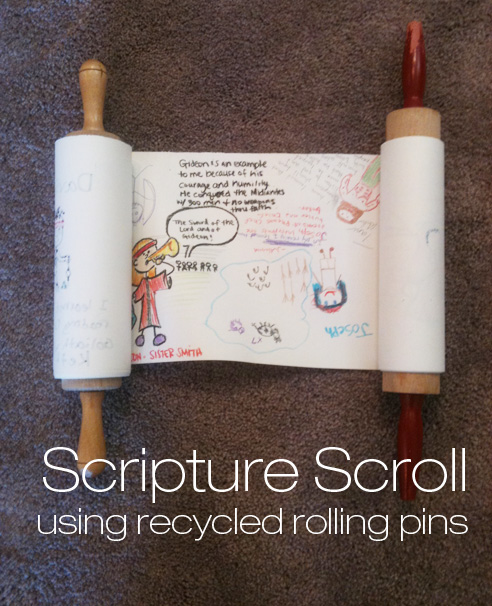Tag Archive: Teacher (youth/children)
The question I am asked most frequently about teaching is this one: “How do I come up with good questions to use in the classroom?” This is a critical skill for a teacher to have because, “To ask and answer questions is at the heart of all learning and all teaching” (President Henry B. Eyring). It would seem a simple thing to ask a question in class, and it is if you aren’t too particular about what follows. If, however, you want to stir up thinking and created a lively learning atmosphere in your classroom, you will need to learn how to craft excellent questions.
When a person tells me about their inability to come up with great questions, my first response is always the same: “You can’t come up with good classroom questions because you don’t ask good questions as you read the material in preparation for the class. You simply read the material.” Most people read a text just to read it. A teacher needs to read it and think about how to use it in class. I find that the most effective way to do that is to ask questions of the text as I read it. Here are 3 examples:
1. I remember the first time I read the Iliadas an adult (this did not happen as I read it in high school because I just sort of faked my way through it). I was struck with the opening line: “Sing O Goddess, the anger of Achilles…” Why was he so angry? How did his anger reach a point where it caused multiple deaths (which the line goes on to say)? Why is this the very opening line of the story? I was full of questions from just those seven words and I read awaiting the answers from the text. Those are questions that could launch a discussion.
2. This summer I read a book entitled “Empire of the Summer Moon” about the Comanche nation in North America. For 150-200 years, up to about 1880, they were the undisputed rulers of the great middle section of the continent, from Texas, and New Mexico on the south up through Kansas and Nebraska. They were fierce warriors, incredible horsemen, and ruled their territory. Their power kept the Spaniards from moving further north from Mexico and the French from moving west out of the New Orleans area. Both groups wanted to keep colonizing but were bottled up by the Comanche protecting their lands. As I discovered that insight in the text, I started asking questions: how did that help or hinder further migrations by different people? What caused the demise of their power and did that hasten migration? How different would America be today if the French had colonized much further west, or the Spaniards farther to the north? Can you see how questions like that could really enable discussion?
3. When I read the scriptures I am full of questions. Recently I was reading in Luke 17 and found this in verse 5: “Lord, increase our faith” and immediately I wondered what is the way to increase faith? So I read the subsequent verses slowly and found that in 6-10 He uses a story to outline one way and in verses 11-19 He shares a second way to do it. I would have never seen that if I had not asked a question of the text.
If you struggle to come up with good questions try doing this – have a conversation
with the text as you read through it. The three examples above all could have just been an ‘ooh and ah’ moment in the reading but I asked questions and was stirred up. Be full of wonder. Think deeply. Probe and push and pull. The questions that bubble up as you read can be turned into good questions that you can ask your students in class.
I’m going to devote the next couple of posts to the art of asking questions, both how to do it and how not to do it.
Are you sure you didn’t want to be an Architect?
What do you think of this sentence: “The teacher is the architect of the learning experience”? I like it a lot. It’s been with me so long that I can’t recall if I thought of it (maybe) or I read or heard it somewhere (more likely). Either way, it expresses a truth about the classroom and the teaching/learning dynamic.
An architect has a vision, then commits that vision into detail on paper, and finally directs the execution of the vision. What he doesn’t do is all of the work. There are lots of people down the line that labor in realization of the vision, but the vision and the details begin with him.
A great teacher begins with a vision of student learning (not teacher performance) over the course of the term and for each daily lesson. The vision is “what will my students learn” and the details are “how will they learn it.” Start with a plan, fill in the details, and then be prepared to modify along the way, if the occasion calls for it. You’re the architect; you get to pick the materials to use and the quantity. For example, student participation is one of the materials to aid in the learning process. It is not the final product. Don’t get fooled into thinking that just because students are participating that they are learning. They may or may not be, but if you’re not careful, you’ll perceive participation as an end, not as a means to an end. The end we want is learning, and participation is useful because it opens up thinking and thinking causes learning. So we love to see hands go up to respond, but here is a truth that is hard to grasp: not everyone that raises a hand needs to be called on. If I ask a question and five hands go up I won’t necessarily call on all of them and I generally won’t do it in the order they raised their hands. If the last hand up is a student who doesn’t talk much, that’s the first person I call on. She needs to be heard and a variety of voices generally makes for a better class. And if I think that after 1-2 comments we have stirred the pot successfully and people are thinking, then I move on because as the architect of the learning experience, I get to select the materials (in this case, participation) and the quantity (how many students I call on).
You might assume that students will be offended if they are not called on, but here is another truth: when you raise your hand it is a sign that you have had some thoughts, that you have been stirred up sufficiently so that you want to participate. Whether you vocalize it or not you still have had the experience of thinking and that enhances learning. And if a student really has something to say that needs resolution, she will let me know by her persistence and she will get her say.
Great teaching is not delivering a boatload of new facts. It is the ability to stir things up in the minds of students so that they think and begin to see things in ways that maybe they hadn’t before and thus learn. When the Savior taught the two men on the road to Emmaus (Luke 24:13-35) He expounded all things unto them, spent time with them, and then left, leaving them to ponder and wonder and grow in learning. He may not have answered all of their questions but He stirred them by leaving some things unsaid.
It takes a classroom architect with vision and skill to make that happen in a great teaching way that leads to great learning.
I Love Teaching, But Must I Also Love The Students?
I walked into the first day of a 10th grade history class at Bellflower High School. The teacher took the roll and then said this (not an exact quote but an adequate paraphrase):
“I am Mr. …… I am the teacher, you are the students. My job is to teach and your job is to learn. I am not here to be your friend, just your teacher.” This was not good for me. I was 15, had acne, very little self confidence, and was just trying to fit in. I was not cool – that social level was always just out of my grasp. But teachers had helped cover up my social deficiencies by being my friends. From kindergarten through the ninth grade I had many really good teachers and never had I been told, right up front, that I should not expect some level of friendship. I quietly revolted by deciding not to be his friend, and not to do much of anything in his class.
Is it necessary to like students? I say yes and I would further add that it is critical to love them, to care about them, and to be concerned about them as people not just numbers (that is, if you want them to learn anything). Someone told me once that a good working definition of ‘charity’ (real, pure love) is to love the unlovable. I like that. It is easy to love the lovable – the students who come in with work done and with eagerness to do more, the pretty ones, the handsome ones, the smiling ones, the confident ones. It is much harder to love the unlovable. Those are the surly ones, the bored, the disengaged, the lost, those that drag in late and stare at you and dare you to teach them. The easy thing is to emotionally dismiss them and just work around them. The hard thing, and the right thing, is to find a way. Work your way into their life.
I’ve heard a teacher or two say something like this: “They don’t show any concern for me and I really have all I can do to work with the ones that seem interested.” If you are going to wait for students to show interest in you first you are going to wait a long time. That is not the natural order of things. In the New Testament, I John 4:19 we learn the proper order and it is this: We love the Savior because He first loved us. The person with the most power in the relationship has to begin the process. Sometimes the process is quick and often it drags out but I can hardly recall a student (teen-ager, young adult, or adult) that I could not be friends with, and then learn to love, after I made the first move and stayed with it in a variety of ways until we were friends.
I Love Teaching, However…
I love the process of teaching. I love to think about teaching, to prepare lessons, to stand in front of a class and watch things get stirred up, and finally I love to watch the light bulbs come on and see students begin to understand something t…
The Scripture Scroll
New Testament Scripture Clever Candy
Jenny Smith
Make Your Own “Brass” Plates
Scripture Mastery Scavenger Hunt
Anonymous
The Armor of God
Seminary Mom
Scripture Memory – The 8 Best Game
Seminary Mom
Seminary Mom: Revving Review Game
Seminary Mom
Seminary Mom: Spiritual Toss Across Game
Seminary Mom

